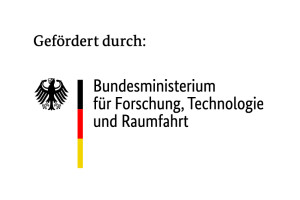Mass spectrometry imaging (MSI) provides a label-free localisation of hundreds of substances such as metabolites, lipids, drugs and peptides. The ability to examine diseased tissue at subcellular resolution has opened up unprecedented opportunities in diagnostics: It enables a better understanding of the processes of, for example cancer, diabetes as well as neurodegenerative and metabolic disorders. However, conventional imaging tools do not meet the challenges that arise from the complexity and heterogeneity of mass spectrometry datasets. That is why the research groups AMBIOM and Spatial Metabolomics are working together to develop a plug-in for the multi-dimensional imaging software napari that makes it possible to visualise and biochemically annotate MSI data. napari is an open source tool that enables a powerful visualisation of multidimensional images, for example from microscopy. It is based on the Python programming language and being continuously expanded.
Napari plug-in enables mapping of small molecules
It will be the first interactive napari interface for the biochemical annotation and integration of small molecule imaging datasets obtained from biological and clinical samples. The aim is to develop a tool that enables spatial mapping of small molecules, thus contributing to a better understanding of their metabolic heterogeneity – the major cause of therapeutic resistance or failure among cancer and cardiovascular tissue samples. The project »Biochemical Annotations of Mass Spectrometry Imaging Data for Worldwide Exchange« is funded by the Chan Zuckerberg Initiative with a funding volume of 20,000 US dollars.
Share
Select publications
Analytical Chemistry, Vol. 97, No. 23, 2025, P. 11980-11985
Saw NMMT, Kowitz L, Lampen P, Kasarla SS, Fecke A, Chen J, Phapale P.
MSI-Explorer: Napari-Powered Tool for Mass Spectrometry Imaging Data Analysis
https://doi.org/10.1021/acs.analchem.5c01513
protocols.io, 2023, P. 1-10
Saw NMMT, Kowitz L, Lampen P, Smith KW, Chen J, Phapale P.
MSI-Explorer - a napari plug-in for biochemical annotation of mass spectrometry imaging data
https://doi.org/10.17504/protocols.io.n2bvj3dyplk5/v1
